On 20th August 2021, the Vivekananda International Foundation (VIF) organized a talk by Shri V. Srinivas, Additional Secretary to Government of India, the DAPRG and Director General, National Centre for Good Governance on Administrative Reforms: Challenges and Opportunities. Dr Arvind Gupta, Director VIF, welcomed Shri V. Srinivas and delivered his opening remarks. He stressed on the need for administrative reforms, their implementation and the requirement of a new governance module in India. He also recalled Sardar Patel’s efforts that laid the foundation of robust governance.
Shri V. Srinivas initiated the discussion by sharing his experience in the administrative services and how he witnessed the trajectory of the growth in administrative reforms in the last three decades. He then defined the structure of the administrative reforms starting from 1950-1999 when the government followed a regulatory administrative model, continued with massive paradigm shift in India's liberalization reform where private sector was given the greatest space in the economy. The third phase from 2000-2014 saw the promotion of rights based services.
The 1950-1990 reforms focussed on stating the basic service as accountability of citizen service and timely redress of grievances. The reforms also ensured transparency and citizen's Right to Information leading to promotion of corruption free government and integrity.
Shri V. Srinivas talked about the important committees and their reports like the A.D Gorwala report on Public Administration 1951, Paul A. Appleby's Public Administration in India: Report of a Survey 1953, K. Santhanam Report of Prevention of Corruption 1964, and Second Administration Reforms Commission. He addressed the relevance of these reports in the contemporary times. With his anecdotal references he identified the homogeneity in the administrative struggles then and now.
He spoke about the decision making process that goes behind selection of policy reports and how it's the discretionary power of the secretariat system followed by the patterns of the first Administrative Reform to shift from a spoiled spaced system to a meritocratic system during the post World War II period. He mentioned the committees that were established to bring in reforms in the Civil Services Examinations.
The Administrative reforms of 1990's brought a quantum change in our governance models. A major economic reform was undertaken, India had to undergo a significant Structural Adjustment Programme of 1991 and the objective was to unshackle the Indian economy from the unnecessary bureaucratic control.
The 2000-2014 Administrative reforms introduced the Right to Information (RTI), Right to Public Services Acts in states which ensured statutory laws that guarantee time bound delivery of public services; Public Grievances with integration of portals and modernized digital platform have witnessed quantum change. New regulatory agencies were set up in a liberalizing economy like the Security and Exchange Board of India, Telecom Regulatory Authority of India, Petroleum and Natural Gas Regulatory Board, etc.
Shri V. Srinivas highlighted the fact that the National e-governance plan of the government was a game changer with an objective to reduce the number of visits to the government offices and the waiting time. One of the major parts of this was the Social Audits, it initially envisaged the civil work that is undertaken at village level with the objective of increasing accountability and transparency.
From 2014-2021 the government came to the view that the Weberian model of governance was rigid, rule bound, hierarchic and there is a need of massive revamping. There was a quest for a new Public Service based on citizen centric parameters. The government model today is building to scale and building to last; embracing technology became the key priority for the civil servants. The massive e-governance programmes like the universalisation of Aadhar card, Jan Dhan accounts, construction of toilets and a technological boom has been witnessed.
He highlighted the importance of leadership in the realm of Public Administration. As it necessitates mobilizing people with different background towards one common goal of advancing the cause of public administration, and the constant need to unlearn old habits and learn new skills. The administrative ethics and values are important as well because they ensure self-accountability and public accountability which are both inter-related and the latter imposes checks on the former.
He then spoke about the Digital India's campaign that aims to transform India into a digitally empowered society and knowledge-based economy, the government is open and governance has become very transparent. Game changers like the Direct Benefit Transfer, One Nation One Ration Card, Passport Sewa Kendra, and GeM a one stop online procurement portal for all government buyers including central/state, ministries, departments, bodies and PSUs.
Shri V. Sriniwas concluded by stating that the way forward is by highlighting the key focus areas which would help the Government to transform its approach to be simpler, innovative and intuitive to deliver the e-Governance.
Dr Arvind Gupta delivered the closing remarks. He addressed the lack of secured, accessible and affordable digital infrastructure; acknowledged the reformed mindset in all aspects of administration, and called the current developments a silent revolution.
The discussion concluded with a vigorous Question and Answer Session.

_0.png)
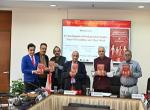


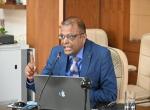
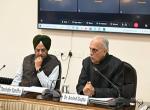
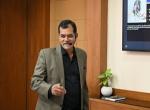
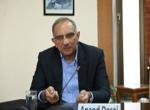
Post new comment